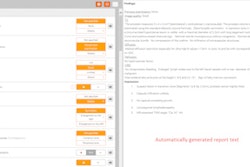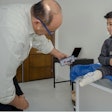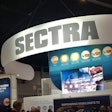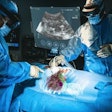
The time for structured reporting has come, and it has changed from an eternal promise, like that of a nuclear fusion reactor, into a device that is ready for clinical deployment, according to a new online article that's garnering great attention.
The four well-respected authors -- Drs. Jan M. L. Bosmans, Emanuele Neri, Osman Ratib, and Charles E. Kahn -- feel it's always seemed like the practical application of structured reporting would be a few decades away. Indeed, it has been 13 years since the first survey showing a preference for structured reporting among referrers and radiologists, and there is still no sight of "the gates of structured reporting heaven," they wrote (Insights into Imaging, 5 December 2014)
However, "heaven" is approaching closer -- largely due to collaboration between healthcare providers, industry, and other stakeholders, crystallized in the Integrating the Healthcare Enterprise (IHE) initiative. There is DICOM structured reporting, the RSNA Reporting initiative, and the cancer Biomedical Informatics Grid (caBIG) initiative that supports the Annotation and Imaging Markup (AIM) project.
 Structured reporting's "fusion reactor" is hungry for fuel, according to Dr. Jan M. L. Bosmans.
Structured reporting's "fusion reactor" is hungry for fuel, according to Dr. Jan M. L. Bosmans.Structured reports took a big step forward this year with the establishment of an open library online where anyone who has access -- RSNA members and soon also European Society of Radiology (ESR) members -- can deposit new templates or translations of existing ones, wrote Bosmans, a staff radiologist at Ghent University Hospital in Belgium and an editorial advisory board member of AuntMinnieEurope.com, in an email.
"Because tools to easily create XML (or later also HTML5) templates were not available, most templates submitted by nonmembers of the subcommittee used to be text-only," he wrote. "You might say they could serve as examples of how radiologists order the content of their reports, but not much more than that. Thanks to the development of T-Rex (a report template editor from the Canadian company Karos Health), the creation of templates has become as easy as writing a letter using a word processor."
Another feature of T-Rex is that it may link any term in the template to RadLex, RSNA's comprehensive radiology lexicon.
"For a number of years, we have been dreaming of (and striving toward) structured reporting's heaven, where every report would have a coded substrate," Bosmans stated. "I do not need to emphasize how important such a model can be -- for e.g., retrospective research, automatic translation, or the follow-up of patients with chronic disease."
In essence, concepts that until this year were purely theoretical have become a reality, he added. That reality requires input from others though. At ECR 2013 in Vienna, a collaborative initiative of RSNA and ESR was launched to translate the RSNA templates into a variety of European languages, adapt them to cover national or specialized applications, and create new templates.
Important progress has occurred this year, concurred Kahn, a professor and the vice chair of the radiology department at the University of Pennsylvania in Philadelphia. He lists the biggest achievements of 2014 as translation of most of the RSNA templates into the new Management of Radiology Reporting Templates (MRRT) standard; publication of DICOM Supplement 155 for public comment, which defines how MRRT template-based reports will flow from the reporting system into the electronic health record; and the development of T-Rex.
Why are structured reports necessary?
The principles that have dominated radiology reporting for a century have been free-text reporting based on a stream of consciousness. Radiologists-in-training are taught to look at images in a systematic way and describe their findings as they see them, the researchers explained. Radiologists formulate an impression that summarizes significant pathological findings and correlates them with the information and the clinical question provided by the referring physicians -- a narrative form of a report.
"One certainly can question if the way of looking and reasoning of a radiologist has to be the decisive factor when presenting the results of an imaging procedure to the referring physician," they wrote. "Is it essential that he or she can reconstruct our analysis and interpretation?"
The answer is no, especially in the instance of many images, they stated. The referring clinician would prefer a structured report, a useful and reproducible instrument for diagnosis and follow-up, rather than a road map of the mind of the radiologist. Also, narrative reports don't always address key clinical questions, may contain clinically important errors, may not be transmitted in a timely fashion, and may contain ambiguous terms.
"Reporting imaging studies in a structured way is certainly feasible, as the information in radiology reports is just as amenable to computer-based storage, processing, and displaying as pixels, voxels, and images," they noted.
However, organizing plain text into a preformatted structured document provides only limited benefit; effective searching and matching also requires the use of "controlled terminology" -- in other words, a lexicon.
A structured report supposes the presence of lists and hierarchical relationships, the use of coded or numerical content in addition to plain text, the use of relationships between concepts, and the presence of embedded references to images and similar objects, according to the researchers.
"Automated reasoning could provide radiologists with diagnostic suggestions for unusual cases," they wrote. "In fact, if we consider a structured report as a guideline or as an assistant when reporting, it may well be useful in two ways: for experienced radiologists, as an aid to properly respond to the clinical question, and for inexperienced colleagues as a problem-solver in difficult cases."
A large number of European national societies of radiology, as well as specialist and subspecialist societies, have expressed support for the initiative, and around 40 of their members have volunteered to collaborate, the authors emphasized. The RSNA and ESR recently approved a formal agreement for collaboration in the reporting initiative that will allow members of both societies to contribute to the development of a multilingual set of structured report templates.
Structured reporting's "fusion reactor" is hungry for fuel -- for the input of templates by radiologists in two continents, maybe even worldwide, Bosmans concluded.



















